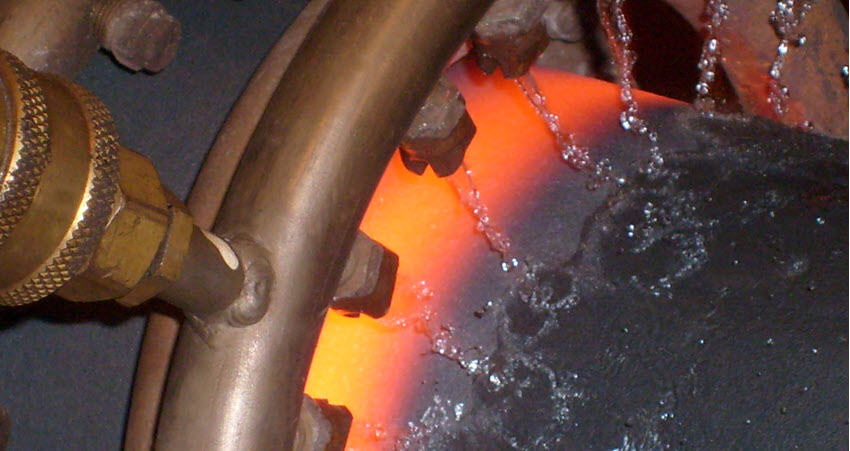Induction Brazing an Aluminum Assembly
Objective A company wanted to assess using induction heating for their aluminum assembly brazing process, and contacted THE LAB at Ambrell to utilize...
Applications
Applications: More
Applications: More

Industries:
Industries: More
Industries: More
Industries: More

Products:
Products: More
Services:
Services: More

Learn:
Learn: More
About:


Induction heating has emerged as a preferred technology in the tube and pipe industry, offering considerable advantages over traditional heating methods. Induction leverages electromagnetic induction to generate heat directly within the metal, delivering precise, efficient, and repeatable results.
Induction heating heats tubes and pipes significantly faster than most conventional methods like furnaces and ovens. This drastic reduction in heating time translates to increased productivity and reduced processing costs.
Induction coils can be customized to focus heat on specific areas of the tube or pipe, ensuring consistent and uniform heating. This eliminates the risk of overheating.
The precise control of heat allows for consistent and repeatable results across various batches and production runs. This ensures a high level of product quality run after run and eliminates the need for rework.
Induction heating converts 90%+ of its energy into heat directly within the metal, minimizing energy losses which results in significant cost savings.
Compared to traditional methods that utilize fossil fuels, induction heating emits no open flames or combustion gases, making it a clean and environmentally-friendly technology.
Induction heating systems are compact and require less floor space than furnaces and ovens, making them ideal for optimizing workspace in production facilities where open space may be at a premium.
Induction heating can be used for various applications in the tube and pipe industry, including bending, annealing, brazing, heat treating, coating, and hardening.
Induction heating can be used to anneal specific areas of a tube or pipe, softening the metal for further processing. This allows for improved formability and reduces the risk of cracking.
Induction heating provides precise and localized heat for bending tubes and pipes without affecting the surrounding material. This results in higher quality bends.
Induction heating offers a clean and efficient way to braze tubes and pipes together. The localized heating minimizes the heat impact on surrounding areas, ensuring strong and reliable joints.
Induction heating can be used to cure coatings on tubes and pipes, ensuring a durable, lasting finish.
Induction hardening can be used to create a hardened surface on tubes and pipes, enhancing their wear resistance and fatigue life.
Induction heating can be used to heat treat tubes and pipes to specific temperatures for desired properties. This allows for improved strength, hardness, and durability.
Induction heating offers a compelling alternative to traditional heating methods for the tube and pipe industry. Its numerous benefits, including rapid heating, precise control, improved quality, and energy efficiency, make it a valuable tool for manufacturers.
If you are looking for a way to improve your tube and pipe processing operations, induction heating is worth consideration. At Ambrell, we offer free testing in our applications lab so you can be sure induction is the right fit for your tube or pipe heating application.

Objective A company wanted to assess using induction heating for their aluminum assembly brazing process, and contacted THE LAB at Ambrell to utilize...

Induction heating is a process that uses electromagnetic fields to heat electrically conductive materials. It has been used in numerous industries...

Induction heating, a process that uses electromagnetic induction to heat electrically conductive materials, is often thought of for large industrial...